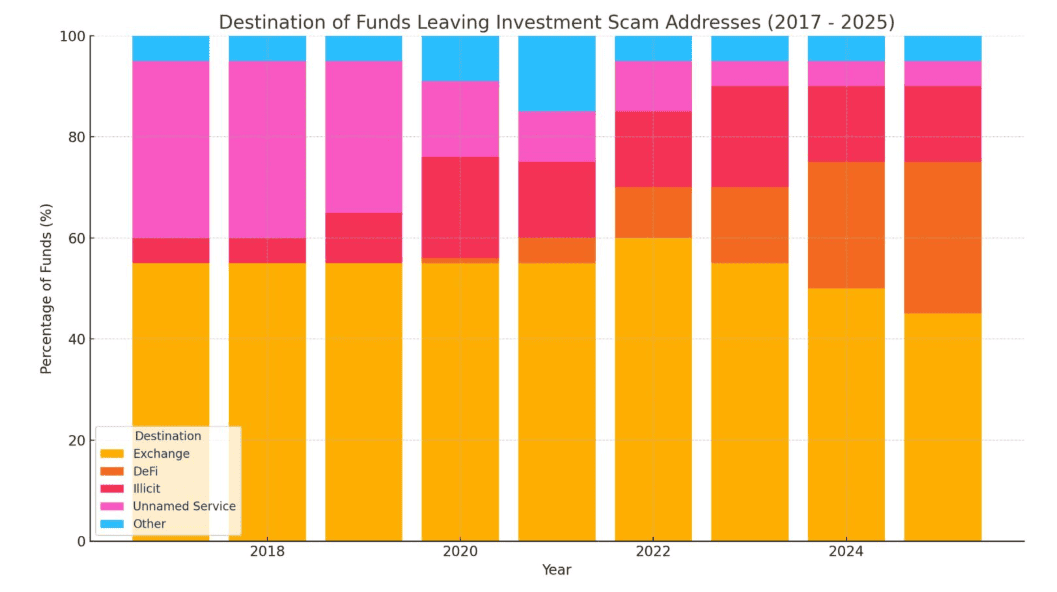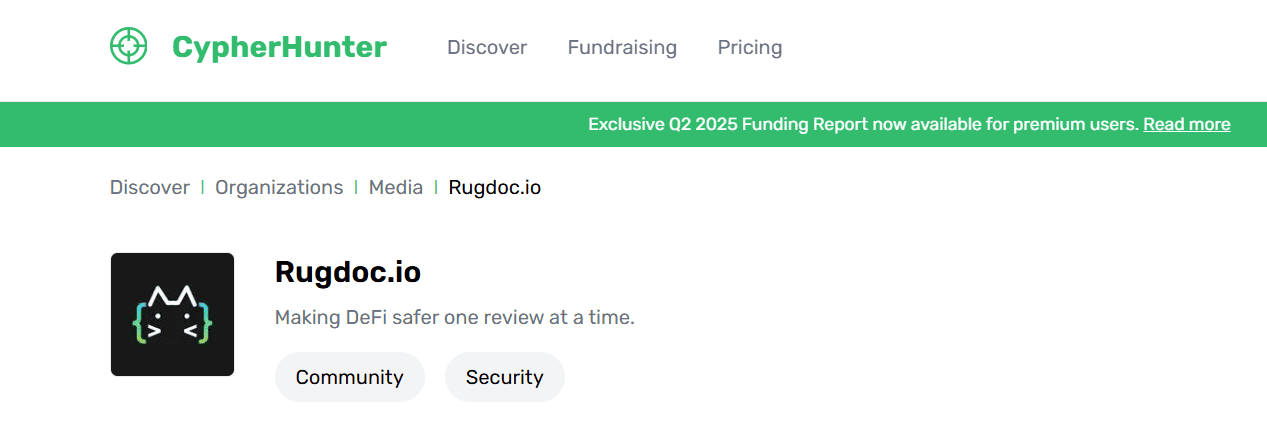Chapters
How to Spot and Avoid Rug Pulls & Crypto Scams
The cryptocurrency market has created incredible opportunities — and equally incredible risks. Among the most dangerous are rug pulls, a type of crypto scam where developers abandon a project and disappear with investors’ funds.
To stay safe, you need to know the warning signs and the steps to avoid becoming a victim. This guide explains exactly how to spot rug pulls and keep your investments secure.
What Is a Rug Pull?
A rug pull happens when the creators of a crypto project suddenly withdraw all liquidity or sell off their holdings, causing the token’s value to collapse to near zero.
It’s a form of fraud that often targets decentralized finance (DeFi) investors and new crypto enthusiasts. Rug pulls can happen in token projects, NFT collections, and even in decentralized exchanges or lending platforms.
How to Spot Rug Pulls and Crypto Scams
Spotting a rug pull before it happens requires paying attention to certain red flags. The earlier you notice them, the faster you can protect your funds.
1. Anonymous or Unknown Developers
If the project’s creators hide behind pseudonyms and there’s no verifiable information about them, proceed with caution.
Legitimate teams usually provide:
- Full names and LinkedIn profiles
- Track records of previous projects
- Public appearances or interviews
Why it matters: Scammers often remain anonymous to avoid legal consequences after a rug pull.
2. Unrealistic Promises
Be skeptical of claims like:
- “Guaranteed returns”
- “10x profit in one week”
- “Risk-free investment”
Reality check: No legitimate crypto project can promise huge, risk-free returns. High rewards in crypto always come with high risk.

Source: CoinLaw
3. Lack of Security Audits
Trusted crypto projects undergo security audits by reputable third-party firms such as CertiK, Hacken, or SlowMist. An absence of audit reports — or the presence of vague, unverifiable “audit” claims — should raise alarms.
Pro tip: Read the audit results yourself, not just the marketing summary.
4. No Locked Liquidity
Liquidity locking means funds are secured in a smart contract for a set time, making it harder for developers to pull them out suddenly. If liquidity is unlocked, developers can drain it anytime, causing an instant price crash.
How to check: Use blockchain explorers or liquidity lock verification tools like Unicrypt or Team Finance.
5. Rapid Price Explosions and Pump-and-Dump Patterns
Sudden, extreme price spikes followed by sharp crashes can indicate manipulation. This pattern often results from coordinated buying to attract investors, followed by mass selling from insiders.
Red flag: If the price chart looks like a steep mountain followed by a cliff, think twice.
6. Uneven Token Distribution
When a handful of wallets control most of the token supply, they can easily dump tokens, collapsing the price. Check token distribution on blockchain explorers like Etherscan or BscScan.
As a safe practice, look for projects where token ownership is more evenly distributed.
7. Suspicious Smart Contract Code
Some malicious contracts include hidden functions that:
- Restrict selling
- Allow unlimited minting of tokens
- Transfer tokens without the holder’s permission
How to spot it: Unless you can read code, rely on professional audits or community developers who review contracts.
8. Poor Community Engagement or Fake Followers
A healthy project usually has:
- Active discussions in forums and chats
- Transparent updates from developers
- Open responses to questions and criticism
Beware if comments are deleted, moderators avoid tough questions, or social media follower counts seem inflated with bots.
9. Fake or Misleading Whitepapers and Websites
A project’s whitepaper should clearly explain its goals, tokenomics, roadmap, and team.
Poorly written content, grammar mistakes, or unverifiable claims are major red flags.
Watch for: Stock photos for team members, plagiarized content, or websites that appeared only weeks ago.
Two Big Rug Pulls That Rocked Crypto in 2025
MetaYield Farm
So far, this is 2025’s heavyweight rug pull — nearly $290 million gone in one hit, wiping out over 14,000 investors.
On paper, MetaYield looked like another promising DeFi farming project. In reality, it was a textbook exit scam. The devs pulled the plug, drained the funds, and disappeared without a trace.
It’s a brutal reminder that even “locked liquidity” promises can be smoke and mirrors when you’re dealing with anonymous teams in DeFi.
Meteora Memecoin Scam
This one’s pure insider game. Meteora’s Solana-based M3M3 token launched, and within 20 minutes, insiders had control of 95% of the supply using over 150 wallets.
From there, it was the classic play: pump the price through coordinated trades, then dump it on the market. End result? The chart nosedived and traders lost more than $69 million between December 2024 and February 2025.
The fallout was so bad that it’s now part of a lawsuit that could set a precedent, pushing to treat stake-based meme coins as securities under stricter regulations.
How to Avoid Rug Pulls and Crypto Scams
Knowing how to spot rug pulls is half the battle — the other half is taking proactive measures to protect yourself.
1. Do Thorough Research
Before investing:
- Read the whitepaper
- Verify all claims
- Research the team’s past work
- Check for news articles or interviews about the project
Cross-reference information from multiple sources — don’t rely solely on the project’s own channels.
2. Verify Team and Audits
Look for transparency in:
- Team identities
- Smart contract audits from reputable firms
- Public code repositories like GitHub
A trustworthy project will make this information easy to find.
3. Check Liquidity Lock Status
Confirm if:
- Liquidity is locked for at least 6–12 months
- Lock information is visible on trusted verification platforms
Avoid projects where liquidity is unlocked or lock durations are suspiciously short.
4. Use Trusted Exchanges and Wallets
Stick to established platforms with strong security records, such as:
- Coinbase
- Binance
- Kraken
- Hardware wallets like Ledger or Trezor
Avoid downloading wallets or apps from unknown websites or unofficial sources.
5. Keep Your Private Keys Secure
Never share private keys, seed phrases, or recovery codes. Legitimate companies will never ask for this information.
6. Be Skeptical of Unsolicited Offers
Ignore investment offers from:
- Cold calls
- Unsolicited emails
- Random social media messages
Scammers often impersonate legitimate companies to lure victims.
7. Avoid High-Pressure Tactics
If someone is pushing you to “buy now before it’s too late” or offering “limited-time deals,” that’s a common scam tactic.
Legitimate investments allow time for due diligence.
8. Watch for Social Media and Advertisement Red Flags
Be cautious of:
- Projects heavily promoted through bots
- Fake celebrity endorsements
- “Guaranteed giveaway” posts
Do reverse image searches to verify endorsements or promotional images.
9. Test First with Small Amounts
If you decide to try a new project:
- Start with a small, affordable investment
- Test the buying and selling process
- Monitor the project’s activity for several weeks
10. Use Security Tools and Stay Informed
Follow trusted crypto security channels and use tools that can detect suspicious activity, such as:
- RugDoc
- TokenSniffer
- De.Fi’s scanner

Stay updated on new scam tactics as the crypto space evolves quickly.
Key Takeaways
The best way to spot rug pulls is by combining vigilance with research. Look for transparency, verify claims, and stay skeptical of anything that seems too good to be true. The crypto market offers legitimate opportunities, but it’s also full of traps designed to exploit inexperience and greed.
Always remember:
- No investment is guaranteed.
- Never risk money you can’t afford to lose.
- Your best defense is education and caution.
Apply these principles and you’ll greatly reduce your chances of falling victim to a rug pull, and keep your crypto journey safer and more rewarding.























.svg)






